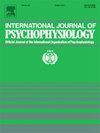Area measure of skin conductance in the Concealed Information Test
Abstract
Skin conductance (SC) is one of the indices commonly used in the autonomic Concealed Information Test (CIT), but SC amplitude is sometimes difficult to quantify. This study investigated the applicability of SC area to the CIT as an unambiguous measure of SC. Secondary analyses of an existing dataset indicated that SC area could be used to classify examinees according to their knowledge status, although the equivalence of its performance with the SC amplitude was inconclusive. Classification performance was best when the SC signal was converted to the difference from question onset and summed over 10 s after question onset. SC area produced relatively consistent evaluations of differential responses based on the amplitude for inter-item comparisons. In addition, the classification performance of SC area exceeded the chance level even for participants who showed few measurable amplitudes (low-responsive participants). A possible implication is that a tonic increase in SC occurred in response to the relevant question even in low-responsive participants, who are traditionally excluded from analysis. The use of SC area might contribute to more impartial data evaluation and broader application of the CIT. These results indicate that SC area can be used as an alternative measure of SC in the CIT.

 求助内容:
求助内容: 应助结果提醒方式:
应助结果提醒方式:


